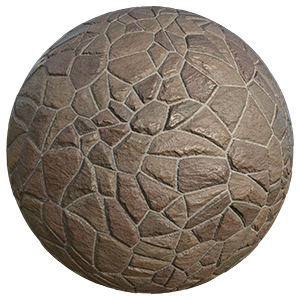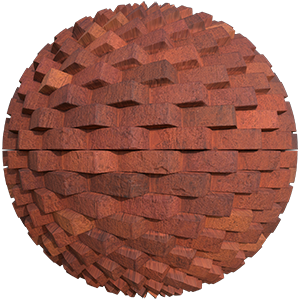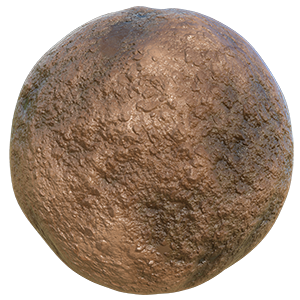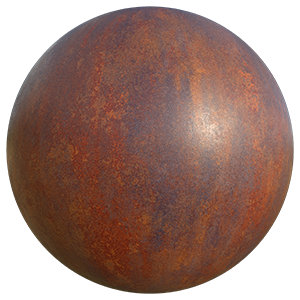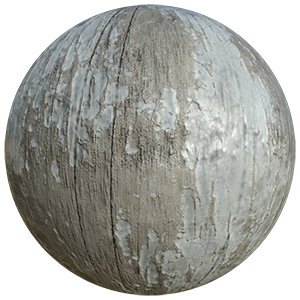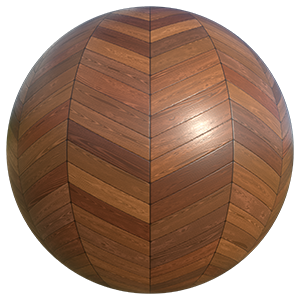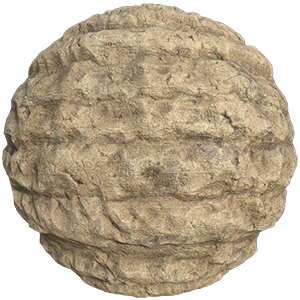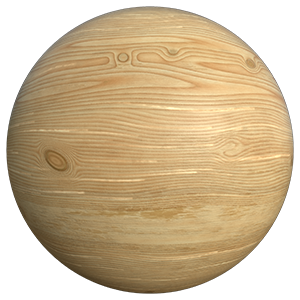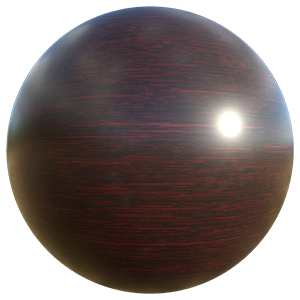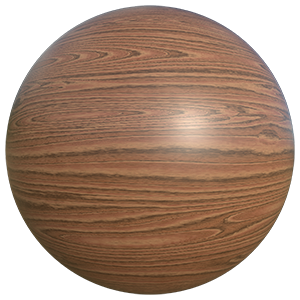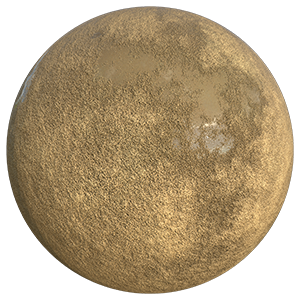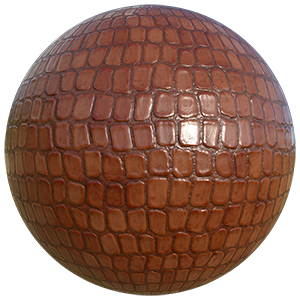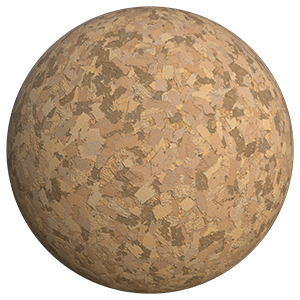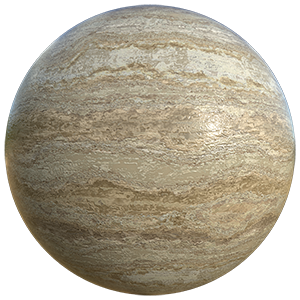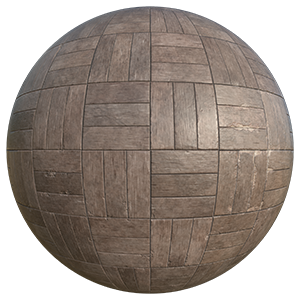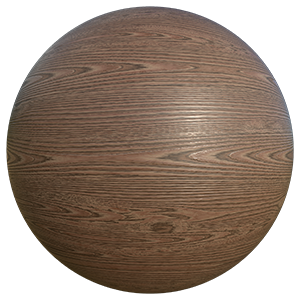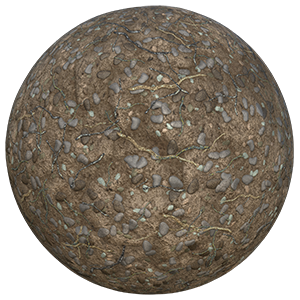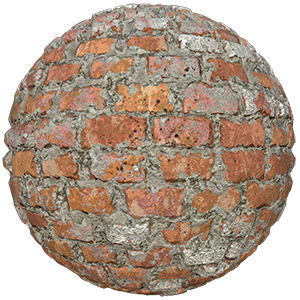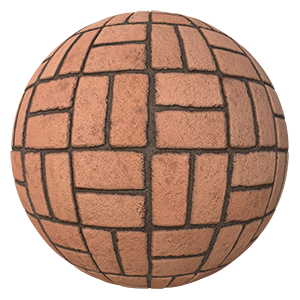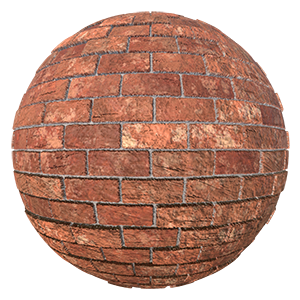It is a stone wall cladding. The stones are of irregular shapes. Some are round; Some are more rectangular and pentagonal.
Each stone has different degrees of damages. Dirt and edge wear can be found on each stone.
Each stone has different degrees of damages. Dirt and edge wear can be found on each stone.
It is a red brick wall but bricks are organized in a weird angle, so brick corners are facing out.
Each brick has different degrees of damage. Pits,trowels and dirt is found everywhere.
Each brick has different degrees of damage. Pits,trowels and dirt is found everywhere.
It is a high wet ground which is very muddy and marshy. There are pebbles and stones scattered among the whole land, but they are covered by clay.
On this bumpy soft ground, there are also a few puddles.
On this bumpy soft ground, there are also a few puddles.
This is a highly oxidized iron sheet with stacks of rust formed on its surface. It is almost fully covered with oxidized substance. The rust has different colors including yellow, orange, red and brown.
The base metallic plate is more shiny than rusty materials. In fact, rust is not a reflective material.
The base metallic plate is more shiny than rusty materials. In fact, rust is not a reflective material.
It is a raw wood texture painted in white. Due to weathering, the paint coating layer is peeling off.
It is a rather rough and raw wood having very bumpy tree barks and textures. The wood plank is broken showing a few long vertical cracks.
Mud and dirt covers the painted wood.
It is a rather rough and raw wood having very bumpy tree barks and textures. The wood plank is broken showing a few long vertical cracks.
Mud and dirt covers the painted wood.
It is Chevron Parquet wood flooring though it looks like a Herringbone floor very much.
You may find the different between Chevron and Herringbone by comparing Red Brick Texture in Herringbone Pattern (Bricks 0003).
Each wooden tile has different colors and bark patterns from others. This makes every tile unique.
You may find the different between Chevron and Herringbone by comparing Red Brick Texture in Herringbone Pattern (Bricks 0003).
Each wooden tile has different colors and bark patterns from others. This makes every tile unique.
From its yellowish color, it tells us it is a sandy rock. Usually, this type of rocky materials can be found on cliff.
Cliff rocks are extremely bumpy. The rocks seem to be divided into bands. It also looks like a stack of rocky layers. This characteristic defines the appearance of cliff rocks.
Due to wind and water weathering, a lot of horizontal stripes appear on the surface. To be precise, the rocks were etched by wind and water flow many decades ago.
Cliff rocks are extremely bumpy. The rocks seem to be divided into bands. It also looks like a stack of rocky layers. This characteristic defines the appearance of cliff rocks.
Due to wind and water weathering, a lot of horizontal stripes appear on the surface. To be precise, the rocks were etched by wind and water flow many decades ago.
It is a large piece of cedar wood which has a very light yellowish color. There are quite a lot of barks on its surface.
The texture pattern has different colors of tree barks ranging from yellow to brown. Surely, barks have darker colors.
Since it is a natural wood, the surface is not very reflective.
The texture pattern has different colors of tree barks ranging from yellow to brown. Surely, barks have darker colors.
Since it is a natural wood, the surface is not very reflective.
It looks like a piece of wenge wood which is a kind of hard timbers, but its glossy and ultra smooth surface tells us it is in fact a lacquered veneer.
The deep red wine color is its signature color.
Similar to " Teak Wood Veneer or Lacquered Veneer Texture (Wood 0012)", it is a superior material for furniture such as cupboards.
The deep red wine color is its signature color.
Similar to " Teak Wood Veneer or Lacquered Veneer Texture (Wood 0012)", it is a superior material for furniture such as cupboards.
From the wood bark pattern and the extremely smooth surface, it is definitely a lacquered veneer.
It shows the wood pattern of a teak tree which has deep brown colors.
Lacquered veneer is largely used as covers of wooden furniture.
It shows the wood pattern of a teak tree which has deep brown colors.
Lacquered veneer is largely used as covers of wooden furniture.
It is a ground near seashore. This seashore is entirely covered by yellowish sand.
Due to uneven surface, sea water is trapped in some holes creating water puddles in this sandy land.
Water and wind marks can also be found on the beach.
Due to uneven surface, sea water is trapped in some holes creating water puddles in this sandy land.
Water and wind marks can also be found on the beach.
It is an artificial leather having the most prominent scale patterns of alligator or crocodile skin.
Scars and wrinkles can be found on each single scale of the skin. Occasionally, pores appear on some scales.
Each scale also curves slightly inward.
As most of leather, the material is dyed into brown.
Scars and wrinkles can be found on each single scale of the skin. Occasionally, pores appear on some scales.
Each scale also curves slightly inward.
As most of leather, the material is dyed into brown.
It is a cork board assembled by pressing small wood strips and chips into a solid slab.
Wooden cork boards can be found in many office. People like pinning memo notes on it. Therefore, it is a good companion of Wrinkled Memo Paper Texture (Paper 0002).
Some walls and floors are made of cork board too, so it is a fantastic material for these kinds of partitions.
Wooden cork boards can be found in many office. People like pinning memo notes on it. Therefore, it is a good companion of Wrinkled Memo Paper Texture (Paper 0002).
Some walls and floors are made of cork board too, so it is a fantastic material for these kinds of partitions.
The layered patterns defines the signature of travertine stones. The color of this travertine marble is mainly yellow with a bit white and brown layers in between.
The surface of this texture is a little bump, but overall it is still smooth.
The surface of this texture is a little bump, but overall it is still smooth.
They are aged and worn decking wood tiles. Each single tile has 3 wood planks. Due to aging, edges are worn.
Barks and dirt can be found on every tile.
Undoubtedly, these texture is very suitable for indoor floors.
Barks and dirt can be found on every tile.
Undoubtedly, these texture is very suitable for indoor floors.
This wooden texture has a lot of barks on the surface. Those barks create the most common pattern of the wood plate.
The fine-tuned roughness further makes this material vivid.
The fine-tuned roughness further makes this material vivid.
It is a ground in a forest covered by big rocks, different sizes of twigs, pebbles and stones.
Those twigs and pebbles are different in both sizes and colors. They are randomly scattered among the whole ground.
Dirt can also be found around branches and stones.
Those twigs and pebbles are different in both sizes and colors. They are randomly scattered among the whole ground.
Dirt can also be found around branches and stones.
These red bricks are arranged in running bond layout and they are partially covered by excessive cement came from grouts.
They have various red and orange colors. Some of them are white and have the colors of concrete.
The edges are worn and there are also pitting on bricks and grouts(gaps).
They have various red and orange colors. Some of them are white and have the colors of concrete.
The edges are worn and there are also pitting on bricks and grouts(gaps).
They are very typical red construction bricks. Though they are called as red bricks, their colors tend to be orange.
Their surface is very rough and full of pits or tiny holes. Edges are also ragged. There are also some damages on the exterior.
The brick layout of these bricks are quite different from classical one. They are arranged in a pattern called basket weave.
Their surface is very rough and full of pits or tiny holes. Edges are also ragged. There are also some damages on the exterior.
The brick layout of these bricks are quite different from classical one. They are arranged in a pattern called basket weave.
They are classical red bricks widely used in many European countries including United Kingdom, Netherlands etc.
If you inspect the bricks carefully, you will find trowel marks on it. Of course, pits, scratches, worn and damaged areas also exist.
If you inspect the bricks carefully, you will find trowel marks on it. Of course, pits, scratches, worn and damaged areas also exist.
